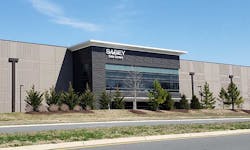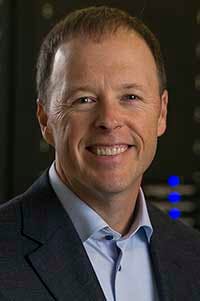Data Center Insights: Tim Mirick of Sabey Data Centers
The Data Center Frontier Executive Roundtable features insights from industry executives with lengthy experience in the data center industry. Here’s a look at the insights from Tim Mirick, Chief Revenue Officer of Sabey Data Centers.
Tim Mirick is the Chief Revenue Officer for Sabey Data Centers and is responsible for Sabey’s national go-to-market strategy. His organization drives leasing of Sabey’s expanding North American portfolio of over 300 megawatts across six campuses including Ashburn, VA, Austin, TX, Seattle, WA, New York, NY and Central WA. Mirick joined Sabey in 2012 and his ability to build an organization capable of communicating the most efficient possible solutions to customers’ capacity requirements has fueled Sabey’s growth.
Started in 1970, Sabey has been building mission critical real estate for nearly five decades and operating facilities since 2000. With a broad array of customers from the financial, healthcare, entertainment, and tech industries, Sabey prides itself on personalized service; its team is dedicated to working with customers to achieve their specific goals.
Prior to joining Sabey, Mirick spent nine years at Amazon.com where, under his leadership, his teams recruited thousands of merchants globally to sell their inventory through Amazon, establishing the 3rd Party Sales Platform as a primary source of revenue. In addition, Mirick has held sales leadership roles at American Express and Real Networks. .
Here’s the full text of Tim Mirick’s insights from our Executive Roundtable:
Data Center Frontier: The arrival of generative AI technologies, popularized by ChatGPT, has the potential to disrupt search and other leading Internet businesses. How might the huge interest in generative AI bring changes in data center hardware and design?
Tim Mirick, Sabey Data Centers: Innovations in AI and associated technologies are driving compute cycles up and to the right as fast as any development we have seen in the last decade. This is going to drive chip innovation, leading to increased density and heat for data centers to address. Solutions like immersion and direct-to-chip liquid cooling could be perfectly positioned to answer these issues.
The best data center operators have been thinking about liquid cooling for a long time, but traditional colocation still accommodates a broad range of densities and that keeps the optimization of air cooling as the focus. As AI technology drives innovation in hardware and more liquid-cooled options are available, facilities will be able to plan for denser environments and drive efficiency. Ultimately, this will help with per kW cooling costs and lower our energy use.
Data Center Frontier: After years of trending lower, pricing for data center capacity increased in 2022. What lies ahead for data center pricing, and what are the primary factors that will influence where prices go in the future?
Tim Mirick, Sabey Data Centers: Until inflation and supply chain pressures ease, you’ll continue to see pricing increases. The convergence of these issues has disrupted a stable environment that allowed for low-cost capital and long-term predictable rental rates. In the place of that stability, we find the cost of delivering and operating space increasing so quickly that quotes older than two weeks may no longer meet the necessary yields of the operator.
This, on top of utility constraints in most of the major markets, has pushed rates back nearly to where they were a decade ago. Long-term deals that operators put into place with very low escalators are now shedding yield every year with inflation and the cost of new debt both over 6%.
The good news is that by building more resiliency into applications, rather than buildings, and implementing denser builds, your cost per kW can go down. Then, as the utilities and supply chain catch up, pricing can stabilize.
Data Center Frontier: In early 2023 we’ve seen several announcements of plans for hydrogen-powered data centers. What are the potential benefits and barriers to the use of hydrogen in data center power?
Tim Mirick, Sabey Data Centers: We believe that there is tremendous potential in alternative power sources. With moves away from traditional base load energy, we’ll need to find new options to run our data centers when the wind isn’t blowing or the sun isn’t out. Hydrogen can be one of those options if we can get the scale in place to deliver the capacity efficiently and cost-effectively over time.
But fossil fuel is still generally required to isolate hydrogen, which raises the question of how quickly we can move to true zero carbon methods. We’re seeing many initiatives, stimulated by the Inflation Reduction Act (IRA), to put large new green hydrogen projects online. These are in their early stages, so pricing and availability remain to be seen.
Also, hydrogen power generation equipment (fuel cells or internal combustion) needs further development. In time, we believe hydrogen, as well as nuclear and hydroelectricity, will all play a role in replacing carbon-creating base load energy.
Data Center Frontier: As campuses get larger and some primary markets experience constraints on land or power, what are the characteristics that will define growth markets in the next several years?
Tim Mirick, Sabey Data Centers: The applications we support will dictate where the growth continues. For non-latency sensitive applications, growth will continue in locations with access to power, reasonable connectivity, business friendly environments and differentiated power pricing.
For customer services that require low latency, the industry will get creative and build capacity and network to support the demand where it needs to be. Based on those criteria, as the population increases, requirements change and some locations reach saturation, new hubs will be established and begin to grow.
About the Author




